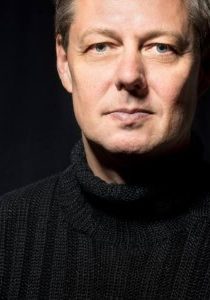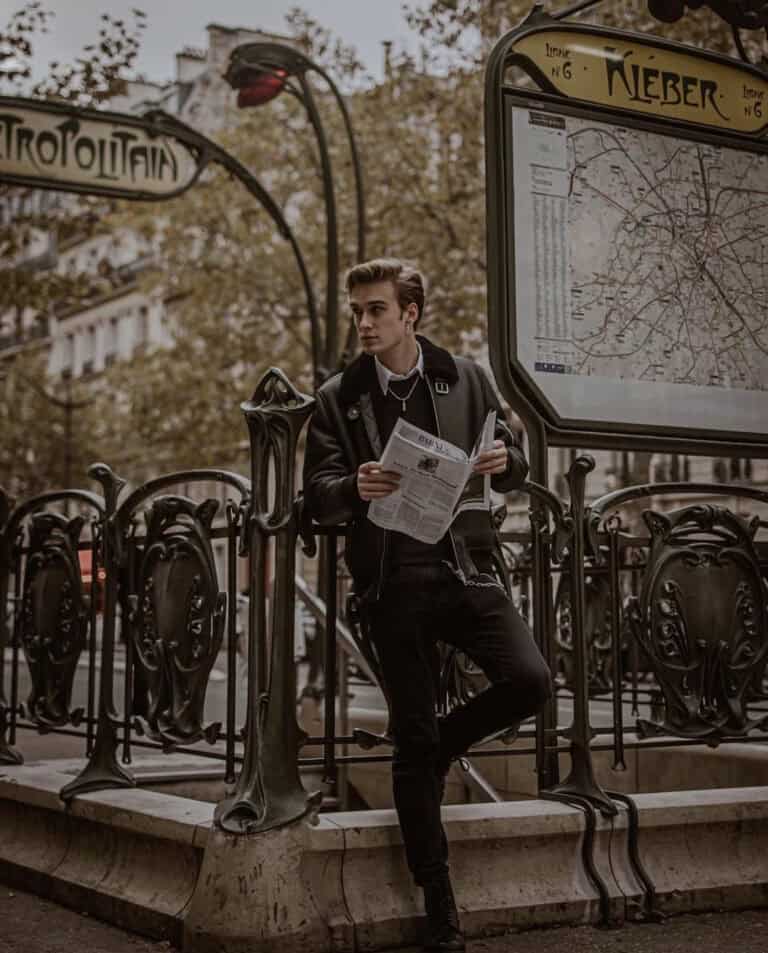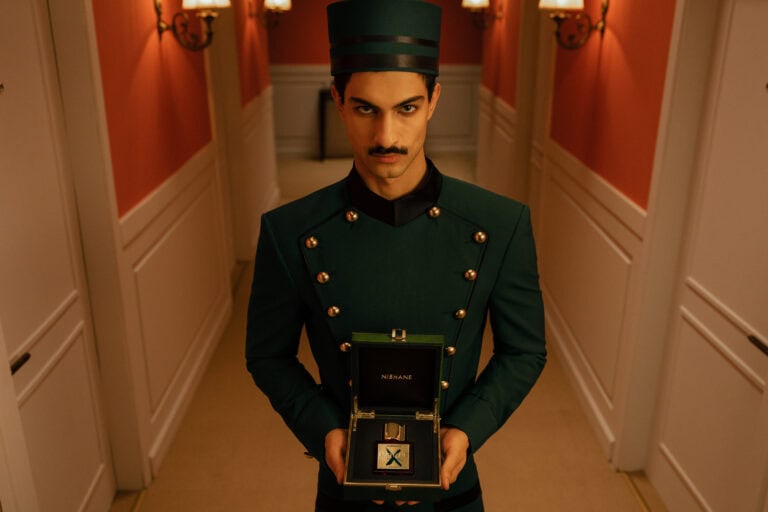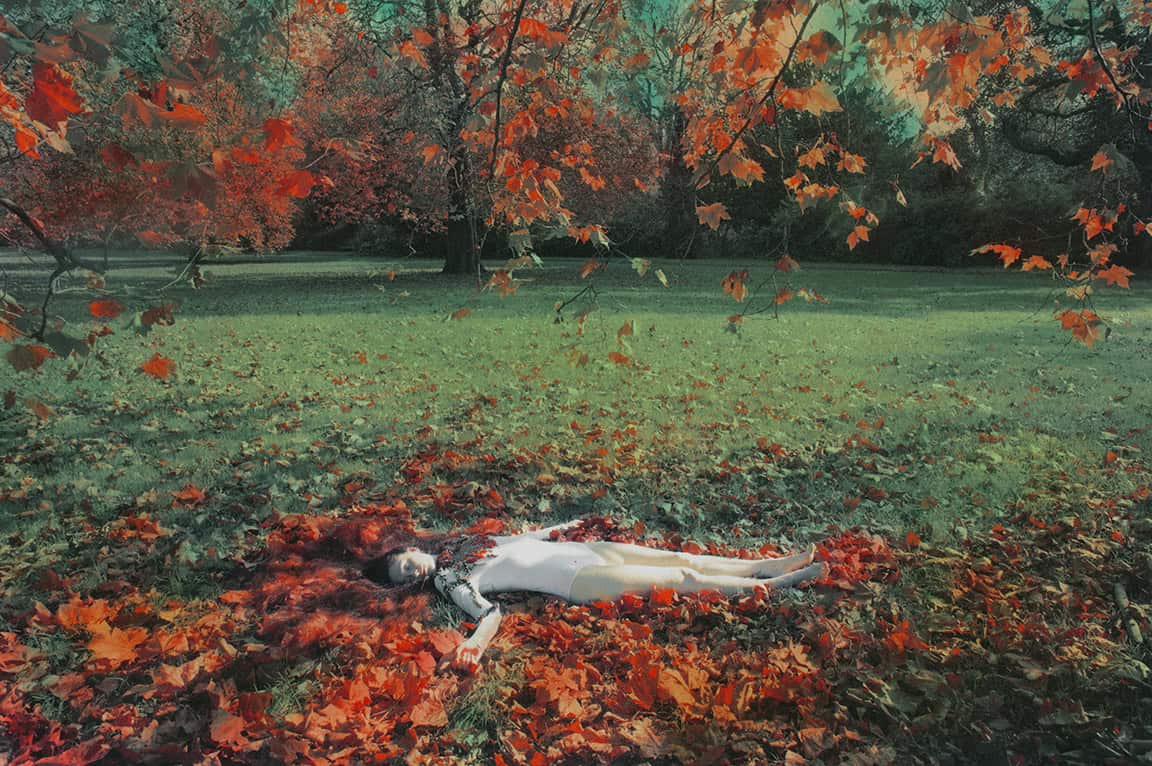
SHAE DETAR, BLISS ISSUE ARTICLE
Thomas Werner
There is a reluctant beauty to the success Shae Detar has had as an image maker. During our conversation, a relentlessly determined artist emerges. She obsessively researched, was protective of her vision, and was dedicated to creating with the joy of a child. It is a mix that so many aspire to as they begin their career. However, creatives often lose to the pitfalls of commercial clients. As well as to the machinations of the art world, and art school critics. Even comments in an increasingly judgmental public space are daunting. Yet Shae has held onto her process in this environment. She has thrived in it turned her back on it. Finally, returning once again to the siren’s call of her roots and the acclaim that seemingly will not let her rest.
Early Creativity: From Magazines to Milan
As a child Shae was home-schooled. Musical theater was a social and creative outlet. Shae noted, “It was creative, but not visual arts. I always made collages with magazines. I would take, i-D and The Face, and Japanese magazines found in the East Village (New York). Cut them up, collage them, and then paint on them.” Fast forward to Milan where Detar is working as a model. Her flatmate, who was preparing to go to school in Florence, saw her collage filled journals and asked why she wasn’t going to art school. She promptly introduced Shae to the work of David Carson and the cutting edge indie magazine Ray Gun.
Art School, Vintage Clothes, and a Turning Point
Intrigued she enrolled at the School of Visual Arts where Carson taught. Said Shae, “You know, let’s just go,” because I was 19, you know? So, I went for two years, but everything I did, I wanted to do by hand. I would make these big paintings that were very collaged. I look back at them now, and they’re terrible, but my mom still puts them up. I’m like, ‘Please take them down. They’re so awful.’ I didn’t like working with text, fonts, and all of the things that you would do as a graphic designer. Clearly, I should have thought then, “Oh, I should go into fine arts.”, but my head just wasn’t in that space. I was just thinking, ‘Oh, I guess I’m just not a graphic designer.’ So, I dropped out, and that was the end of school. Then I got married, and I didn’t know what to do. So, I sold vintage for six or seven years. And then my dog died.”
The Birth of a Photographer
The trigger for change in our lives often comes from unexpected places. With the death of her dog, Detar quit everything realizing she had to decide what to do with her life. Though neither she nor her husband really know why, he suggested photography. That was it, she began researching online and learned her craft. This ability to focus her attention and research deeply is a trait that has served her well throughout her career.
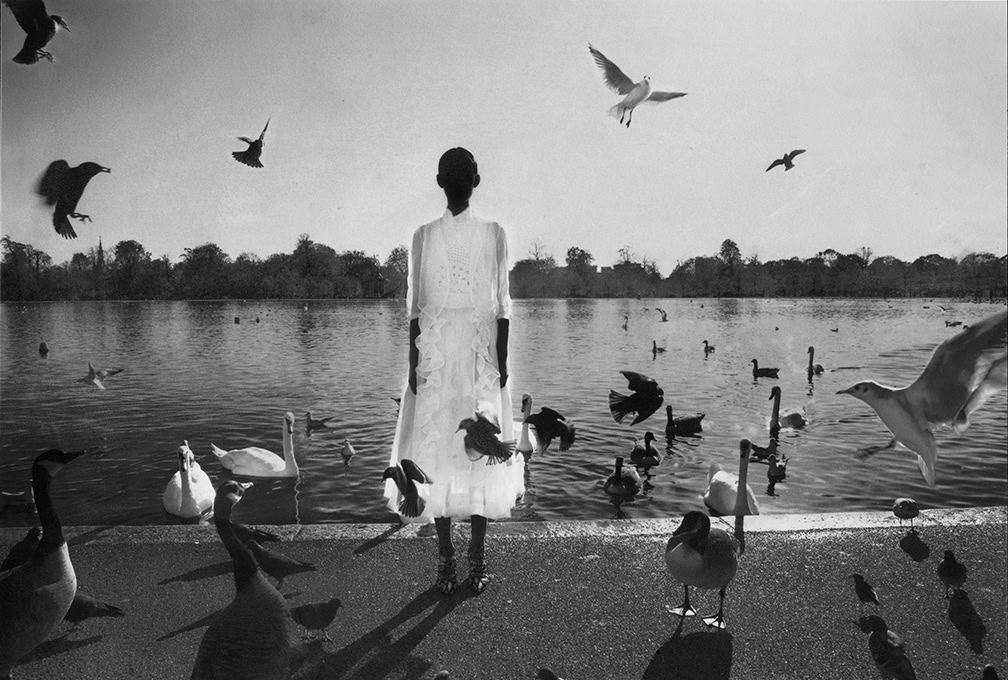
Shea was 30, cool, and making work that bloggers, the kings and queens of the internet at the time, loved. Blog agencies asked her to partner and she created campaigns for COACH among others, but deep down inside she didn’t want a career as a blogger nor the accruement that came along with it. Up to this point she had been making self portraits, but realized that she needed to take her work more seriously. Despite her fear of wasting her subject’s time she started photographing other people. The commercial world once again took notice and within a year the fashion company Aritzia asked her to do a billboard with her painted photos. “It was my first job, and I was really scared, because I had no idea how to do that. But I was like, “Alright.”, and that was really it.”
A Difficult Path
Though her career path sounds extraordinary, as with most it was not quite that simple. It took two and a half years of research, application, and failure to find processes that both satisfied Detar and were archival enough to share with galleries, collectors, and clients. She began working with analog photography, but the traditional path of colorizing photographs with oils placed her work in a historical context. So Shae stopped printing silver gelatin and explored an endless number of paper and paint combinations, looking for a way to paint photographs that was both practical and satisfying.
The search was complicated by a desire to work large scale, which presents it’s own problems. Though the grain in a large analog print was beautiful the paint often ate away at the paper losing too much of the image. By comparison digital prints had always been too sharp for her taste, but the right combination of paint and paper followed by a light varnish took away that feel, with the resulting image cinematic in quality.
Given her work in digital Photoshop has found a small role, but is hardly the predominant method for creating the final piece. Her technique is far more organic as failure and imperfection are built into Shae’s creative process, “Over the last year I had to accept what people are getting when they want handmade painted photos. They’re getting the imperfections of the whole process. Like, it’s not going to be a factory-made, “this is perfect,” So, I just had to take that pressure off myself.”
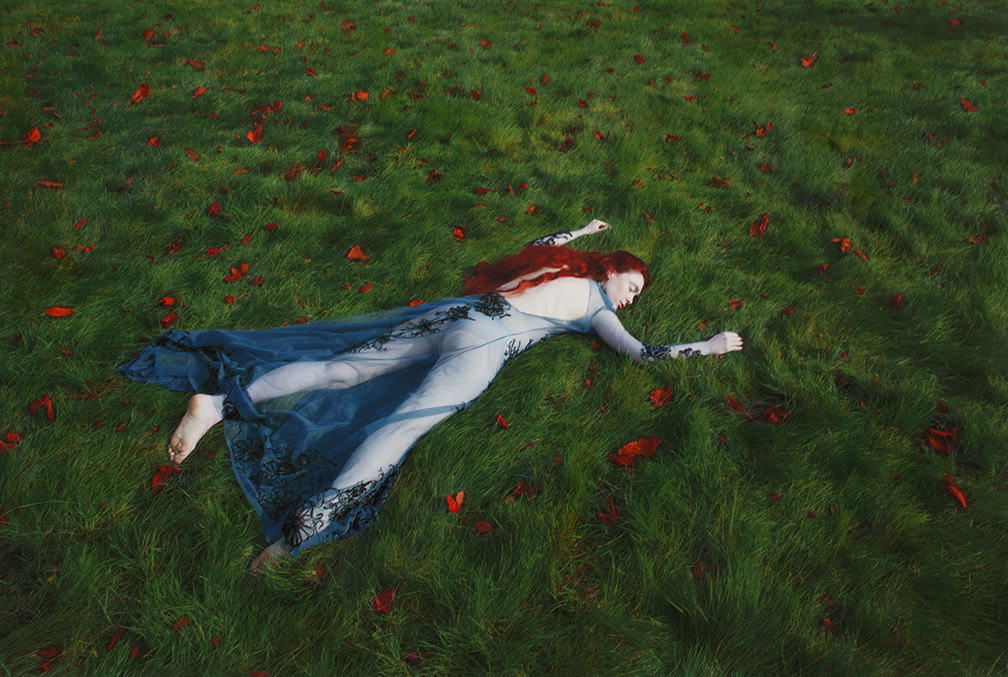
A Childlike Approach to Art
If the resulting methodology sounds a bit like her early days collaging magazines in the East Village, it is. “I try to keep this child-like mentality about it. When you watch children making art, they don’t overthink it. They’ll just make something that, “Look at this!” And then they’ll show you, and they’re so proud of it. I really, honestly try to keep that mentality. When I shoot, the planning is in preproduction, “Where’s my location? Who are my models?” That kind of thing. Once I get to the location, I don’t want to think about what I’m going to do. I just want to do it. And then when I come home, I just edit through, print out tons of different things so I’m not afraid if I mess up, and that’s it. I try to just be like a little kid.”
A Romantic Notion
Given the preponderance of self-aware images in art galleries and on Instagram there is a romantic notion to the way Shae creates that is reflected in the final piece. This extends to her model choices as well. Her locations are well researched, looking for places that are “timeless and epic” but unrecognizable to her friends and colleagues. Furthermore, her casting is less structured as she doesn’t want to be influenced by who she is photographing.
Though they are treated with respect her subjects are like a blank canvas as they become part of the set or scene. This allows her freedom to explore, embrace mistakes, and paint as she needs during the final stages of production. She is sure to let her models know this beforehand: “I just want you to know, please be okay with this, that you may end up not having a face. You might be yellow. You could be purple. At this point I don’t know what I’m going to do.”
An Unconventional Career in Vogue
Given this you might be surprised to find her clients included Vogue Italia, Vogue Netherlands, Marie Claire Italia, Interview Magazine, I.D, Vice, Dazed, Grazia, The New Yorker, Elle UK, Marie Claire, NY Magazine, Forbes, Nylon, and Teen Vogue, among others. Her photographs have been exhibited internationally. Her work was included in ‘The Female Gaze’ exhibit with Vogue Italia in Milan. It was on a panel with Vogue Italia editor Chiara Bardelli Nonino and a handful of other photographers Shae realized she was not a photographer in the sense that many are.
“I’ll say this, for sure. I don’t love the shooting part. Which is one of the reasons that I was thinking about leaving photography to go to painting. I thought, “I’m clearly am not a photographer because I don’t even enjoy it.” When I come alive is when I think about my influences, the things that I’m reading, poetry, and music, when that’s seeping in—forming the image when I’m in my studio painting the photographs and deciding what to do. In my opinion, that is what sets my work apart from other people’s. If you see my images before they’re painted, they’re probably boring. What makes it interesting is what I do in my studio, recreating the image out of watercolor or charcoal or whatever, and that part of it is very much what I’m reading, what I’m listening to.”
From Cameras to Canvases
With that realization, Shae quit photography, turning her back on a career that many people dream of. Even though she had never so much as drawn formally, she applied to painting school. Convinced she would never go back to photography, she sold her cameras. She literally begged for one of the 8 spots in the studio. She made a video promising to work harder than anyone else at the school. Accepted into the program, Detar stepped into an entirely different world…
It would be a mistake for anyone to underestimate the process of this dedicated, fiercely creative, childlike author of fine art and commercial images. Artist’s like Shae live for their craft. Though it may frequently exist in advertisements and galleries, there is a bit of magic in its essence. Perhaps a touch more honest authenticity is exactly what we all need.
You can find Shae’s work at Shaedetar.com
To read the full interview order your copy of BLISS now
Shae Detar, by Thomas Werner @Thomaswernerprojects
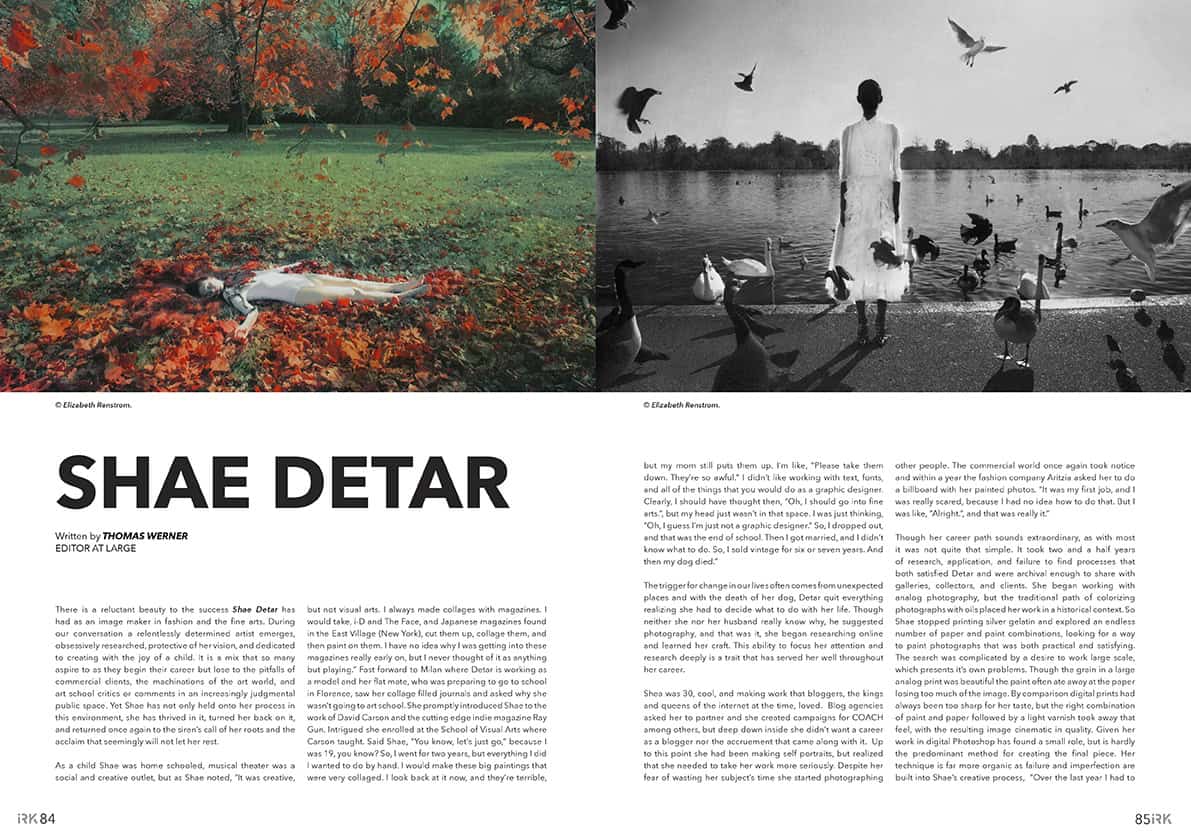
Share this post
Thomas is the author of the books The Business of Fine Art Photography, Routledge, New York, and The Fashion Image for Bloomsbury Publishing, London, with an upcoming book co-authored with Microsoft BING and AI team leader Derrick Connell due out in early 2026. He is also an Editor at Large for IRKmagazine, Board Member for the Santa Fe Council CENTER for Photographic Art, and past Photography Program Director at Parsons School of Design in New York. He is the former owner of Thomas Werner Gallery in Manhattan’s Chelsea Art District, and a former National Board member and New York Chapter President for the American Society of Media Photographers. As well as a former Advisory Board Member for Ithaca College’s Executive Education Program, contributor to Adobe’s Lightroom Academy, and a photography consultant for COACH, among others.
Werner led a team developing a media and literacy website for the United Nations Alliance of Civilizations/UNESCO and was a recurring instructor for the United Nations Education First Summer School. From 2005 – 2019 he worked with the United States Department of State on cultural projects in Russia partnering with 32 cultural, educational, and governmental organizations to develop projects in 29 cities. As an exhibiting artist Thomas was represented by galleries in New York and Los Angeles, and his work reviewed in The New Yorker Magazine.
Currently a creative consultant, Thomas works one on one with students, creatives, businesses, cultural institutions, and not for profits, helping them with career development, team management, innovation, education, professional practices, and the development of effective communication across multiple media platforms.
For fourteen years his research was Russia centric spending an average of 30 days a year in the country. The focus was the introduction of contemporary education methodologies, and the development of creative cultures within the country. Russian partners have included; The State Hermitage Museum, the National Center of Contemporary Art, Perm Regional Government, The Moscow Biennale for Young Art, National Centre of Photography for the Russian Federation, The Central State Archive of Film, Photographic and Phonographic Documents, The Moscow Biennale, The Pro Arte Foundation, and others. He has curated exhibitions in the United States and abroad, including seven co-curated exhibitions at the State Hermitage Museum in Saint Petersburg, Russia. His private collection of Russian photographs and artifacts have been exhibited internationally.
Thomaswernerprojects.com @Thomaswernerprojects IG
Read Next

